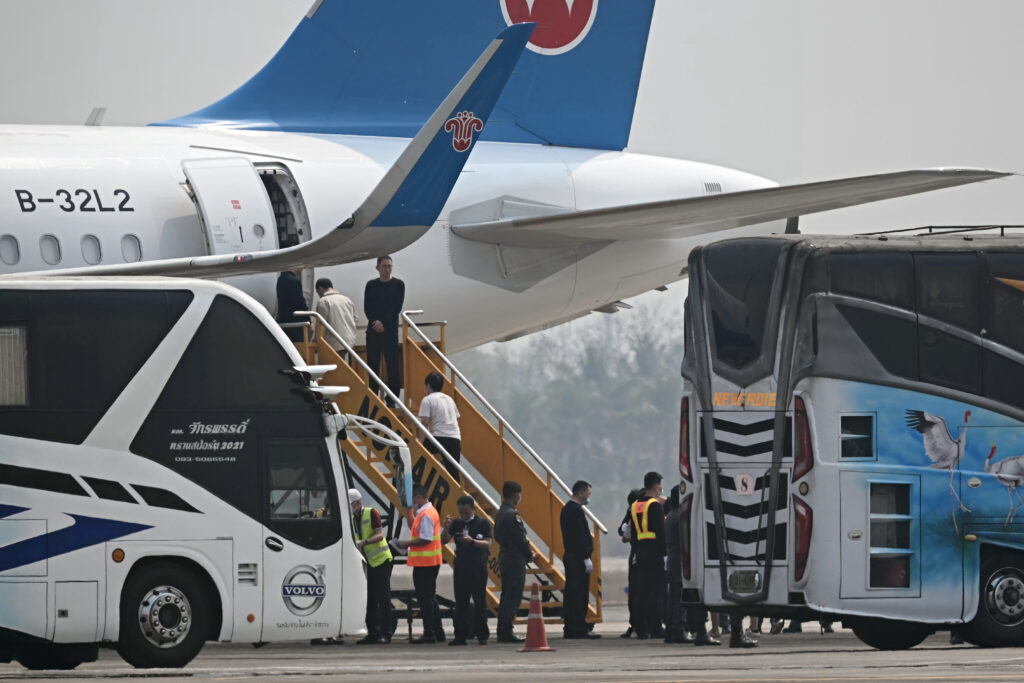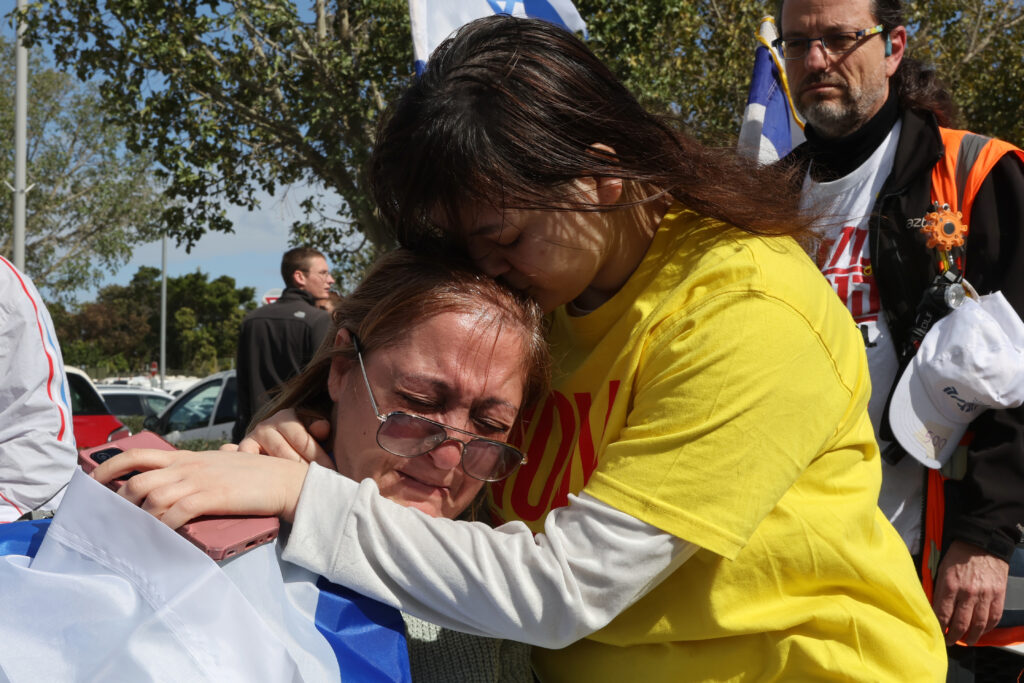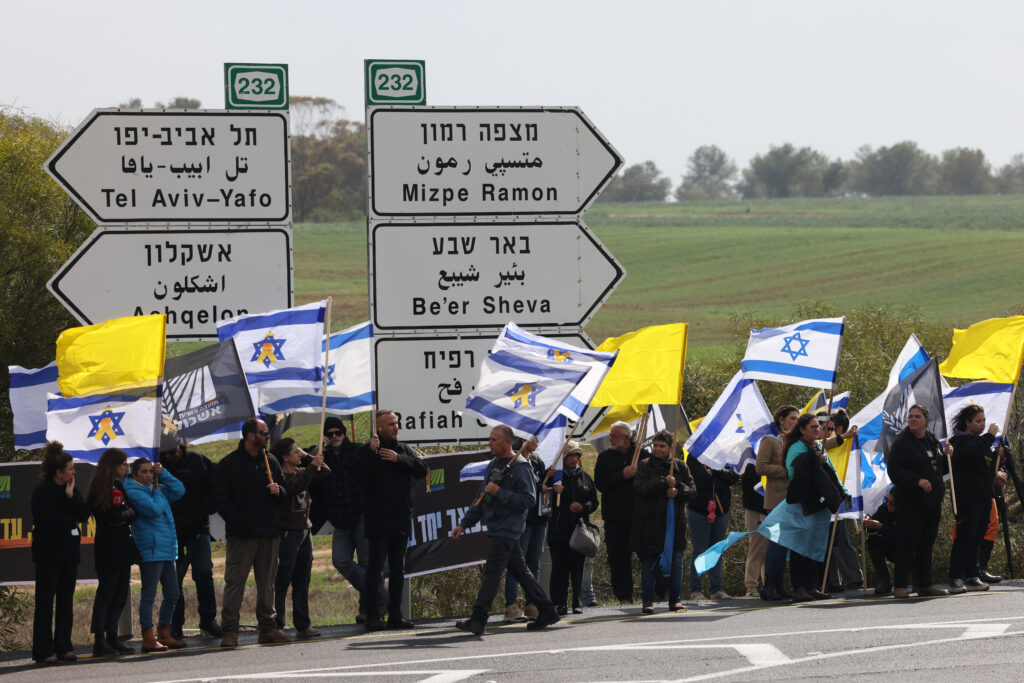‘One of the hardest days’: Israelis gather for return of hostages’ bodies
Thousands of grieving Israelis gathered in the Tel Aviv plaza dubbed Hostages Square on Thursday, standing or sitting in silent mourning, after Hamas handed over the bodies of four hostages. The Palestinian militants had delivered the black coffins they said contained the bodies of Shiri Bibas and her two young boys, Kfir and Ariel — who became symbols of the ordeal that has gripped Israel since the Gaza war began with the Hamas attack of October 7, 2023.It was the first handover of bodies by Hamas under a fragile ceasefire that has seen living hostages exchanged for Palestinians held in Israeli prisons.For this macabre first, actors, singers and hostage relatives had gathered on the square that became a symbol of the Israeli movement to bring the hostages back home.”In two days, we’ll receive six live hostages, and then four more bodies, it will be the end of the first phase but we’d like them all to come back”, actor Lior Ashkenazy said on stage shortly after thousands of attendees observed a minute of silence for the four deceased hostages returned on Thursday.”It’s a national mourning, we feel that they (the Bibas mother and sons) are part of our family, we had hope until the last moment,” Gersende Grynszpan, 49, told AFP in Hostages Square.”Today is an extension of October 7,” she added.Chen Kugel, Director of the National Institute of Forensic Medicine, confirmed in a statemet in the early evening that the body of veteran peace activist Oded Lifshitz, 83 at the time of his abduction, was among those returned.He said that work to identify the three other bodies was still continuing.”We received with deep sorrow the official and bitter news confirming the identification of our beloved Oded’s body,” the Hostages and Missing Families Forum said in a statement.Earlier in the day, hundreds of tearful Israelis clutching flags had lined the route of the convoy bringing the bodies of the hostages to the forensic institute in Tel Aviv for identification.A screen in Hostages Square showed images of those still held in the Palestinian territory against a backdrop of sombre music.”This is one of the hardest days, I think, since October 7,” said museum manager Tania Coen Uzzielli, 59.”I think the feeling of personal guilt is something each of us carries — that maybe we could have done more, that maybe we didn’t do enough to prevent this tragedy.”Orange balloons symbolised the red hair of the two Bibas children, who were aged four and nine months at the time of their capture.The family became national symbols of the despair that has gripped the nation since the Hamas attack and hostage takings.- ‘Ask for forgiveness’ -Footage of the Bibas family’s abduction, filmed and broadcast by Hamas during its attack, showed them being seized from their home near the Gaza border.Yarden Bibas, the boys’ father and Shiri Bibas’s husband, was abducted separately and released in a hostage-prisoner exchange on February 1.While their deaths have largely been accepted abroad as fact since Hamas said an Israeli air strike killed them early in the war, Israel had never confirmed their loss.In a video statement, Prime Minister Benjamin Netanyahu said Israel was “enraged by the monsters of Hamas” and vowed to “eliminate” the Palestinian militants after they paraded the coffins in Gaza.The Red Cross-facilitated handover took place at a former cemetery in the south Gaza city of Khan Yunis, where four caskets were shown on a stage next to armed militants.Hundreds of Gazans had gathered to witness the ceremony. Large numbers of armed men in military fatigues and Hamas headbands stood near the stage for the ceremony, which was carefully choreographed like previous handovers of live hostages.Each coffin bore a small photograph of the deceased.Israeli President Isaac Herzog said: “The hearts of an entire nation lie in tatters.”On behalf of the State of Israel, I bow my head and ask for forgiveness. Forgiveness for not protecting you on that terrible day. Forgiveness for not bringing you home safely.”Under the first phase of the ceasefire which took effect on January 19, militants have so far freed 19 living Israeli hostages in exchange for more than 1,100 Palestinian prisoners.Hamas and its allies took 251 people hostage during their attack. Prior to Thursday’s handover, there were 70 hostages in Gaza, including 35 the Israeli military says are dead.Yael Adar, whose son was killed on October 7 in kibbutz Nir Oz, told the crowd in Tel Aviv he just wished for his son’s body to be returned “to end doubts on his living status”.





